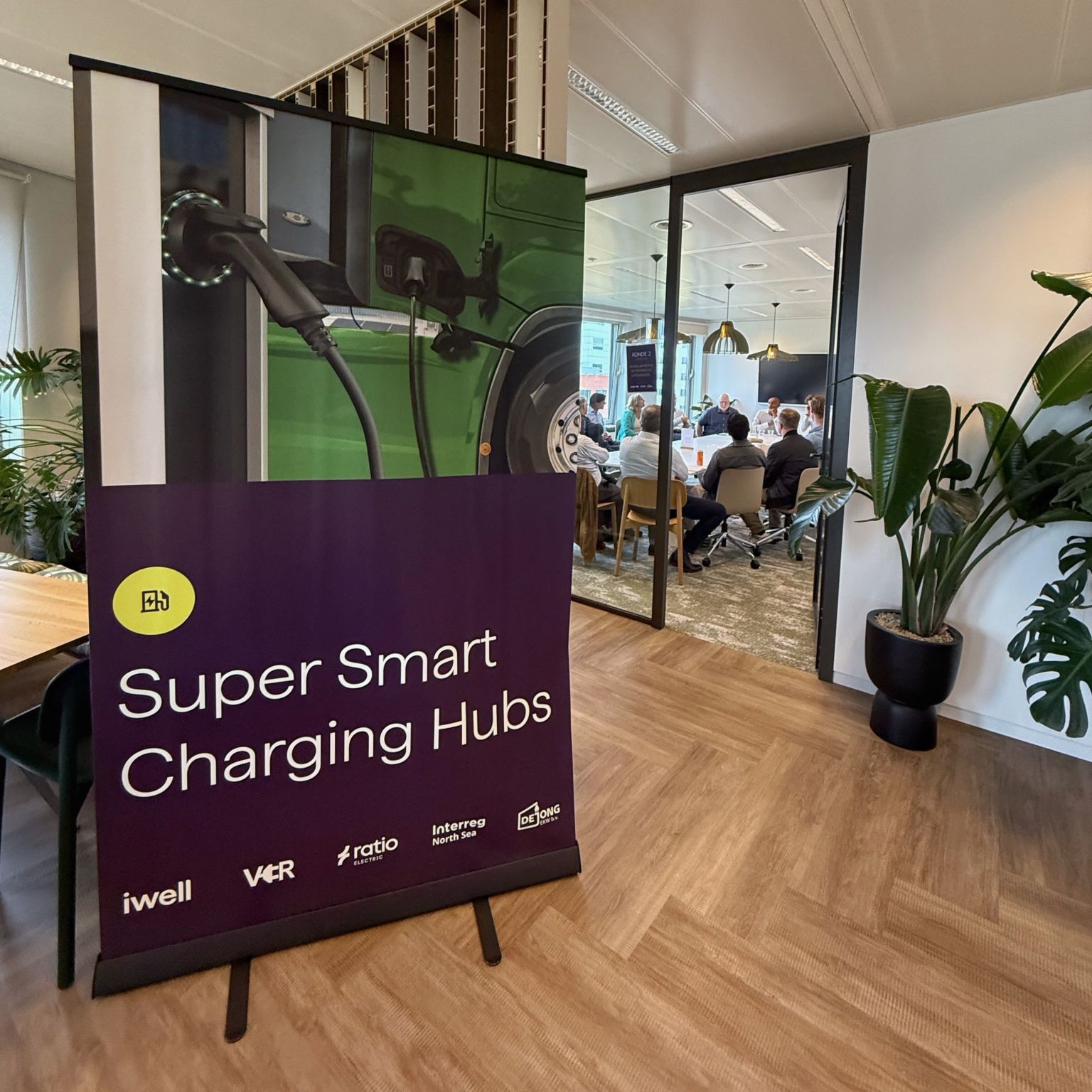Inspiration, Knowledge, and Practice
The afternoon kicked off with a plenary session featuring Jan Willem de Jong (iwell), Jaap Burger (RAP) and the Living Lab Vlissingen. They shared insights on the latest developments in energy management, the challenges of integrating electric mobility, and the practical steps being taken in Utrecht and beyond.
Interactive Sessions and Real-World Cases
Participants then joined interactive break-out sessions, choosing between topics such as costs and payback periods, legal frameworks and challenges, or a technical tour of the battery system and charging plaza. These sessions provided a deep dive into the financial, regulatory, and operational aspects of super smart charging hubs.
A highlight was the presentation of real-world cases, including logistics centers and transport companies that have successfully implemented energy management systems (EMS), battery storage (BESS), and solar PV to enable large-scale EV charging—even on limited grid connections. The Utrecht office case demonstrated how combining PV, BESS, and smart controls allows for 14 EV chargers to operate within a contracted grid capacity of just 128 kW, with a payback period of 4.2 years.
Living Lab Vlissingen: A Glimpse into the Future
The event also spotlighted the Living Lab Vlissingen, where an iconic industrial building is being transformed into a state-of-the-art charging hub, co-funded by the Interreg North Sea program. This project exemplifies how historic sites can be repurposed for the energy transition, integrating solar, storage, and smart charging in a scalable model.
Key Takeaways
- Smart charging hubs, combining PV, BESS, and advanced EMS, are essential for enabling EV charging without overloading the grid.
- Most PV energy can be directly consumed on-site, and battery storage helps manage peaks and optimize energy flows.
- The business case in this project is compelling: with dynamic energy contracts and avoided grid fees, investments in smart charging infrastructure can pay back in just over four years. The business case for larger projects with public charging and multiple partners is not yet clear everywhere
- Scaling up battery capacity and optimizing grid contracts are crucial for future-proofing charging hubs, especially in winter months.
Networking and Collaboration
The day concluded with a networking reception, where participants exchanged ideas and forged new collaborations to accelerate the rollout of super smart charging hubs across the Netherlands.
For more information about the event or the showcased solutions, please refer to the slides of the meeting (only in Dutch).

